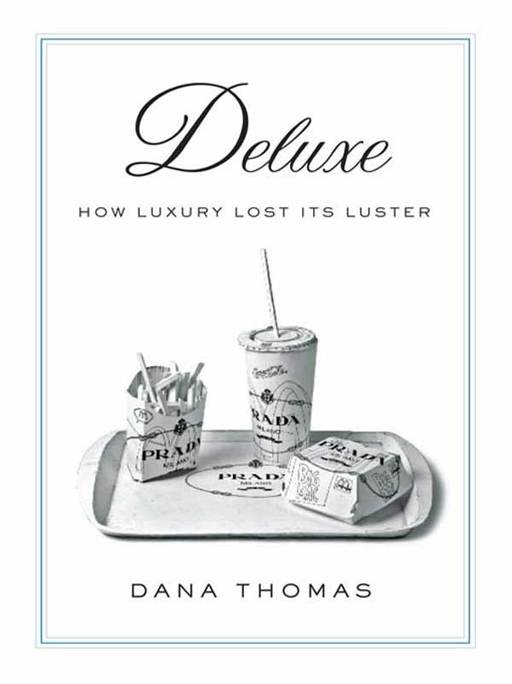
Deluxe
How Luxury Lost Its Luster
کتاب های مرتبط
- اطلاعات
- نقد و بررسی
- دیدگاه کاربران
نقد و بررسی

April 16, 2007
Newsweek
reporter Thomas skillfully narrates European fashion houses' evolution from exclusive ateliers to marketing juggernauts. Telling the story through characters like the French mogul Bernard Arnault, she details how the perfection of old-time manufacturing, still seen in Hermès handbags, has bowed to sweatshops and wild profits on mediocre merchandise. After a brisk history of luxury, Thomas shows why handbags and perfume are as susceptible to globalization and corporate greed as less rarefied industries. She follows the overarching story, parts of which are familiar, from boardrooms to street markets that unload millions in counterfeit goods, dropping irresistible details like a Japanese monk obsessed with Comme des Garçons. But she's no killjoy. If anything, she's fond of the aristocratic past, snarks at "behemoths that churn out perfume like Kraft makes cheese" and is too credulous of fashionistas' towering egos. Despite her grasp of business machinations, her argument that conglomerates have stolen luxury's soul doesn't entirely wash. As her tales of quotidian vs. ultra luxury make clear, the rich and chic can still distinguish themselves, even when Las Vegas hosts the world's ritziest brands. Thomas might have delved deeper into why fashion labels inspire such mania, beyond "selling dreams," but her curiosity is contagious.

June 15, 2007
As cultural and fashion editor for "Newsweek" in Paris, Thomas is well positioned to provide an in-depth business history of the luxury goods industry, including its modern evolution. Owing to corporate greed, globalization, and excessive brand licensing across diverse product lines, small family-run ateliers that furnished exclusive products to elite customers have all but disappeared along with the artistry, quality, and personalized service associated with these items. The only distinction between luxury and mass-marketed goods now may be the label, which itself drives the price. Despite the current profit-driven environment, Thomas recognizes that small new companies offering impeccable craftsmanship continually sprout up to serve select niches, yet how long these enterprises last before succumbing to the lure of great profits associated with mass production and consumerism is debatable. Besides being a fascinating read suitable for public libraries, this book is a valuable resource for special libraries collecting in the luxury goods and related industries for better understanding previous business and marketing strategies and their outcomes.Caroline Geck, Kean Univ. Lib., Union, NJ
Copyright 2007 Library Journal, LLC Used with permission.

Starred review from June 1, 2007
Thomas has been the fashion writer for Newsweek in Paris for12 years and writes about style for the New York Times Magazine and other well-known publications. She traces the origins of luxury from the midnineteenth century, when Louis Vuitton made his first steamer trunks andcustom-made clothing was strictly the province of European aristocracy, through the fashion boom of the 1920s, when namessuch asDior, Gucci, and Yves Saint Laurent came into prominence, andbuyers with expendable income could afford exquisite clothing and perfume. Sadly, today most of the well-known names are owned by multinational groups, and luxury items have become commodities, where buyers crave name brands for what they represent rather thantheir inherent quality of manufacture and design. Thomas takes us into the streets of New York, where counterfeit items are sold that look so much like the real thing that it takes an expert to tell them apart, tothe Guangzhou region in China, where children make knockoff goodsunder appalling conditions. She manages to remove the veil from the fashion industry with a blend of history, culture, and investigative journalism.(Reprinted with permission of Booklist, copyright 2007, American Library Association.)

























دیدگاه کاربران